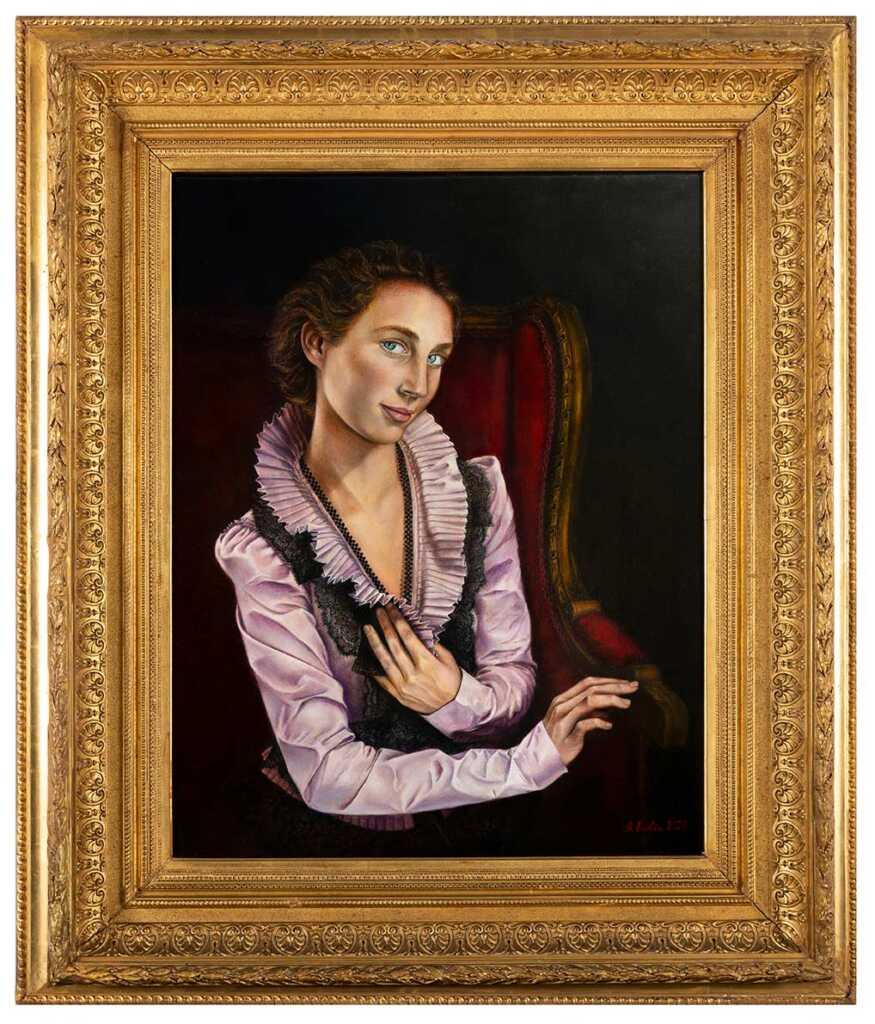
A contemporary extension of 700 years of European artistic tradition:
Your personal introduction to classical artisan. . .
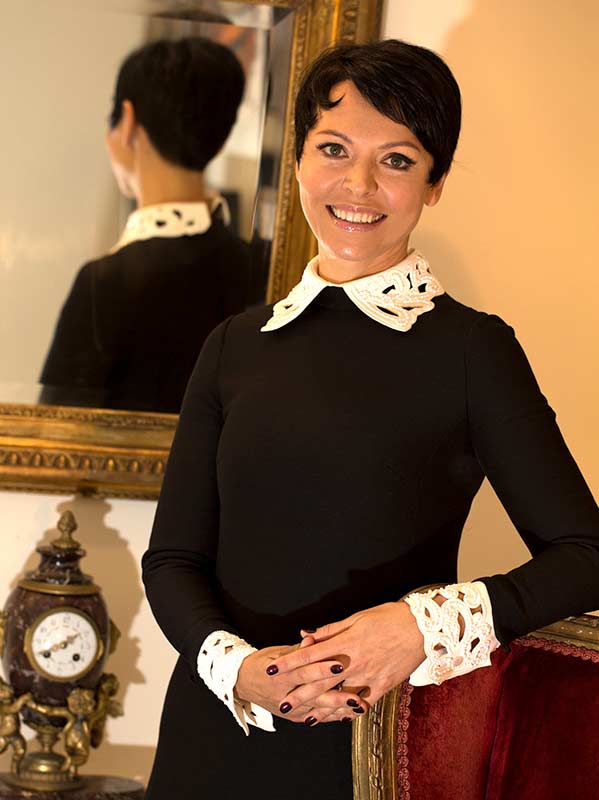
Anna Rubin is a professional artist based in Florence, Italy. Anna’s fine art paintings glorify beauty through Still-Life, featuring meaningful compositions of antique and modern objects. Anna also creates captivating figurative artworks. Anna Rubin’s fine art is recognized by art investors, international art galleries, and prestigious art auctions. Drawing from her European roots and traditional upbringing founded on a deep appreciation of culture, history, and aesthetics, Anna employs Old Masters Technique to create fascinating artworks in Still-Life, Figurative and Conceptual genre.
Moved by memories, emotions, and the need to express her feelings, Anna started painting in 2002, with a series of works, all painted in oil on Belgium Linen, using the Old Masters Technique of painting in layers.
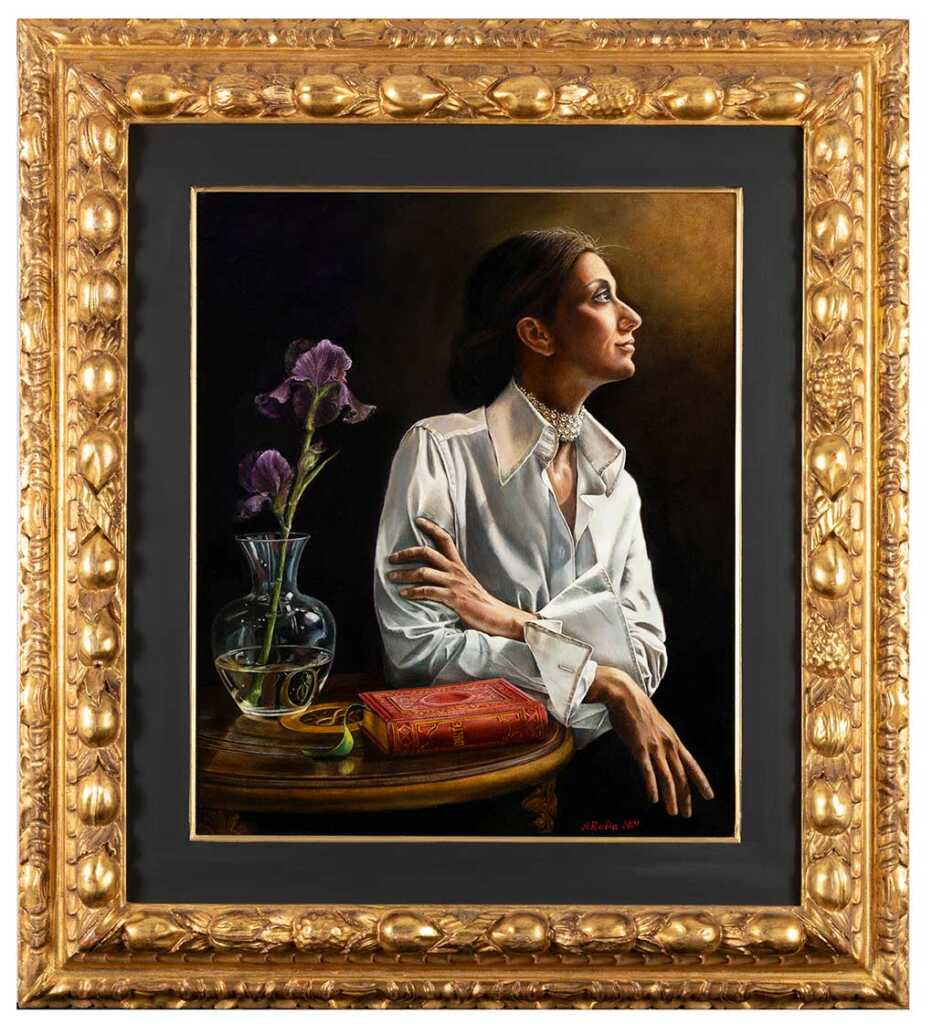
In 2004, Anna started painting her first collection as a professional artist. Rather than compromise tradition and artistic integrity for commercial opportunism, Anna has steadfastly remained true to her style and quality, persisting in creating artwork that accurately reflects her European roots, interpreted with breathtaking 21st-century realism. In doing so, she labors over each painting for several months to achieve a result not replicable by modern mass production methods.
This authenticity has simply accelerated her commercial success. Her first paintings were sold to different private collections in Queensland, Australia, in April 2005. Anna’s first solo show opened in February 2006 and sold out to numerous collectors in Queensland, South Australia, New South Wales, and Victoria. The second solo show of collection, “Les Objets d’Amour,” was sold out in February 2008 at Richard Martin Art Gallery in Sydney, Woollahra.
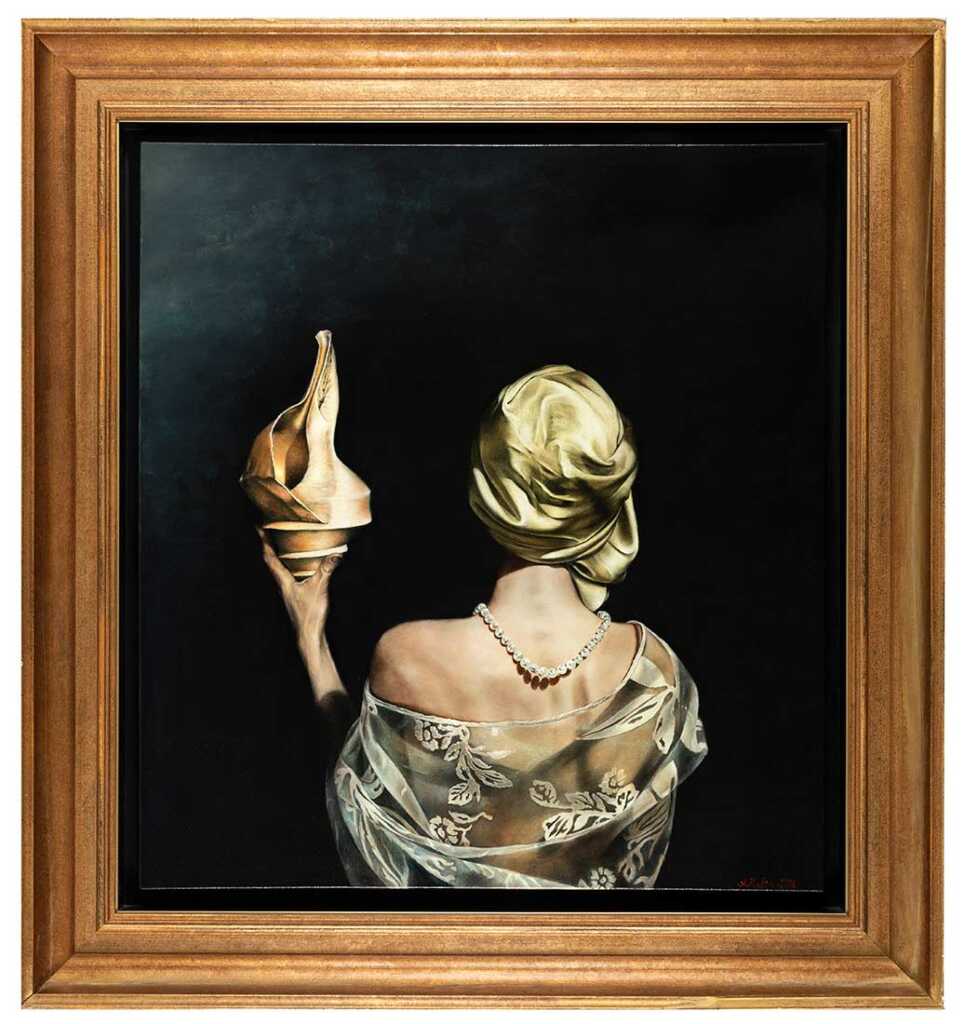
Anna Rubin © All rights reserved.
Aside from her solo shows, Anna participated in numerous successful collective exhibitions, was a finalist, and received awards in Art competitions from 2006 to 2018. In June 2008, Anna celebrated her début in the Australian secondary art market. One of her earlier works, “Pisces from Reef” (2004, $38,000), was sold over the price estimate ($58,000) by “Deutscher & Menzies Art Auction” in Sydney June 2008. Another of Anna’s artworks, “Plaisir de Liberté,” successfully sold over the price estimate by “Deutscher & Menzies Art Auction” in Sydney June 2009. In June 2012 at Menzies Important Australian and International Art Auction, the artwork “Forgiveness” sold for A.U. $19,990. Same sized artworks were sold in 2006 for A.U. $6,600. On average, Anna Rubin’s art value tripled over the 14 years of her professional career from 2006 until 2020, being in high demand by corporate and private clients in Australia and internationally. Anna celebrated her 10th year as a professional artist at Palazzo Versace, Gold Coast, in June 2016 with a retrospective solo exhibition featuring her celebratory collection “Les Objets de Beauté.” All of her artworks were successfully sold nationally and internationally. In January 2017, Anna exhibited a small collection of her artworks in Singapore Contemporary Art Show. Following her successful début in the Asia Art market, she exhibited at Asia Contemporary Art Show in Hong Kong in March 2017 with great accomplishment. From 2017 – 2018 Anna has worked on major commissions for the Lord Mayor of Brisbane and for the International Corporate Low Firm Art Collection.
In May 2019, Anna moved to Florence, Italy. Her artistic talent and achievements have been reverenced and recognized, so much so that from September 2019, she has been given a studio/gallery in the historic 14th century Palazzo Ridolfi at the Accademia di Beli Arti di San Pietroburgo in Firenze, where she is creating her new body of work.

An Exclusive Interview With
Anna Rubin
By Ida Salamon
Ida Salamon: Growing up in Moscow, you were very attached to your family, especially your grandfather. You studied economics there, but as a young woman, you emigrated far away to Australia. What were the reasons for this move, and how did this change affect you?
Anna Rubin: “Wanderlust” and most certainly Destiny… Also, because I could and am privileged to have done so. Generally, I’m convinced that to understand deeply/excel in something, it’s essential to spend an extended amount of time and energy with it, study, practice, and explore. This principle can be applied to every area of life: profession, knowledge, relationships, economics, politics, and travel. If it’s not about having a break, I’d like to not just go somewhere out of curiosity but truly live in that country. Learn the language, absorb the culture, environment and make meaningful connections to people. Each immigration seemed coincidental and rather adventurous. Still, it has always been serendipity, pivotal points crucial for my development.
Those experiences were necessary refinements to find purpose and accomplishment. Germany and France liberated and emancipated me from my parents and grandparents’ wonderful yet quite over-regulated life. Australia and the people I met there “prompted” me to pursue my desire– to create Art.
There is a twist to this part of the story…first, there was a move to Germany to study for an MBA. Then, it was France for a restoration project, then back to Germany, and then Australia, where I started painting and became a professional Artist. Since childhood, I have always dreamt of living in Florence because it is the heart of Art I admire. All the wanderings and life experiences prepared me for life in Florence.
Arriving here as an accomplished, successful artist, I am excited and curious about what grand thing will happen here!
This magnificent place redefines the connection between past, present, and future with its timeless beauty.
Every country I lived in has had a continuous influence on me and, therefore, my Art.
Florence doesn’t just have an impact; I feel AT HOME, I create different Art. I am in awe, inspired, deliriously happy and hopeful, curious, and stimulated, even if I had to make a new life and my European artistic career here.
Ida Salamon: Your success came quickly. You were able to sell your work for excellent prices, you found your patrons, who remain loyal, and in addition, you create for well-known firms. You have the tremendous privilege of doing what you love best. Your only fear is, as you said, that you will not be able to produce all the paintings you want during your lifetime. Considering this, could you tell us something about your time management?
Anna Rubin: It is a true privilege indeed. Time management is an essential skill, which in combination with consistent discipline, talent, professionalism, comprehensive knowledge of the industry, and personal charm, enables success in the Art industry. I’m genuinely grateful for my experiences, upbringing, communication skills, and gift to see the beauty where seemingly nobody can notice it, punctuality, discipline, sense of responsibility, and self-criticism.
I never miss a deadline and am pedantically organized in my studio and life. Allowing for enough spontaneity in such periods is generally possible and appropriate, e.g., holidays, weekends, etc. The main motivation behind successful time management in my artistic career is the fact that I absolutely enjoy painting. I share my experiences in the course “Management in Arts” with artists to be in the Accademia in Palazzo Ridolfi. Time management and planning is an integral part of it. I make a long-term plan for five years and a one-year plan with a complete understanding that I must stay flexible and open-minded.
Being very sensitive and emotional – but knowing that – I have trained myself and am lucky to remain calm and collected in a crisis. 20% of my working time is dedicated to marketing and networking; the rest is the creation process with painting, preparing, composing, research, reading, etc., which doesn’t feel like work but joy for me.
An average day starts at 7am, with a coffee and beauty routine, walk with my beagle Ellie, and checking on my friends worldwide on the phone. By 9am I’m working in the studio until 7pm, Monday till Friday.

Oil on Belgium Linen. European guilded outer frame. China lacquer inner-frame. guilded inner runner. 68 x 58 cm.
Anna Rubin © All rights reserved.
Ida Salamon: From the beginning of your artistic work, you were using the old master techniques. Some of your paintings have up to 350 layers; you can create sensational light and color effects. Could you tell us something about your methods of painting in the past as well as today?
Anna Rubin: The origin of technique I always admired and use the principles of goes back over 1500 years to Byzantium’s Icon painters. Painting in layers, minimum 4 with gold-leaf in the spaces where the Saint’s face and hands would be later painted. Ca. 700 years ago, the approach developed in the Icon Painting allowing the connection between ‘heavenly’ and ‘earthy’ to become stronger and more emotional through rather a realistic effect.
A pivotal point was the Golden Age of Renaissance in Italy when the Old Masters perfected the existing technique with Sfumato, Unione, Chiaroscuro, and Cangiante techniques.
Growing up in Moscow, with access to art books at home and the State Library opposite our house, educating myself in the manifold of techniques from an early age. Observing the glorious Old Masters first in the books and then later in real life and color in Moscow Museums allowed me to compare and choose what resonated with me.
For example, Botticelli and Leonardo da Vinci are both divine. Still, I forget to breathe when looking at Leonardo da Vinci’s artwork, so I have researched his technique to determine which one he used. When the time came, I learned and used my interpretation of this technique, experimenting by adding my own elements and tried new combinations of the ones I knew would result in magnificent quality masterpieces.
These experiments and growing skills resulted in my changes, from Classical Realism to Avant-garde Realism.
In the beginning, I drew a very detailed sketch of the composition set up in a Black Box with arranged light, painted the whole artwork in Chiaroscuro on linen, and applied layers of glazes and hues one after another throughout the process of the painting.
The Black Box and Light are irreplaceable for Still life compositions; however, I don’t make the detailed sketch and the Chiaroscuro layer anymore, as it has become unnecessary – and somewhat dull to spend so much time with.
Sketching directly on the prepared linen, I mark the darkest darks and the lightest lights and thinly glaze first with primary colors to map out the palette and establish the guidelines for later. I apply my own formula for the hue for the lightest lights now, and it shines gently, just like a gold leaf through the layers creating the 3-D effect and incredible depth in the 2-D medium.
I still paint only with the most petite “00000” brushes and apply multiple layers of glaze, medium and primary colors in between, and hue for defining the object’s intricacy; up to 500 layers, to create refined, with exquisite details artwork with polished glaze finish.
Also, I stopped using vanish ten years ago altogether after experimenting with the effects of Liquin. Originally in the Old Master’s Technique, it was used to enhance the vibrancy of colors, using a unique formula to mix it with certain pigments to make the result even more dramatic. In the last few years, I also started to use restored antique frames instead of newly made ones, sometimes sent from afar.
This choice not only finishes the artworks aesthetically more beautiful, but it is a logical continuation/expression of my personal philosophy: recycling, promotion, and preservation of the Tradition and Artisan’s Work from the past.
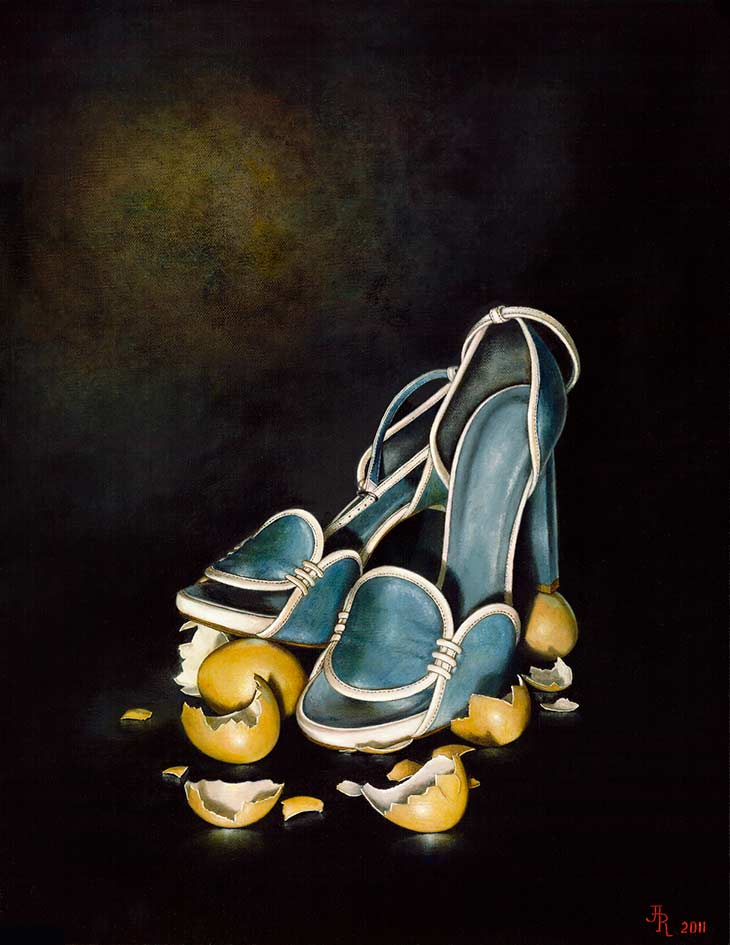
Ida Salamon: As an artist who paints in the style of classical realism, which artistic genre do you find most inspiring? Who are the old masters close to your heart?
Anna Rubin: Leonardo da Vinci (for much more than one reason) Titian, Rafael, Caravaggio, Flemish School Masters, Venetian School to name a few. From each of these incredible Masters and Schools, I learned directly how to paint skin, glass, silver, and silk, achieving the illusion of different textures in the painting, the Caravaggio light – divine mystery and drama.

Ida Salamon: Which emotions and personal experiences influence your artwork?
Anna Rubin: My artwork is materialization, an expression of my personality, emotions, values, style, principles, attitude, and impressions of the world I live in. The feelings are positive, sometimes loud, hopeful, joyful, passionate, occasionally quiet, sensitive, thoughtful, and even sad…but never ugly!
My Art expresses my philosophy of timeless, eternal beauty and its power, positive influence, love for history and culture, as well as an appreciation for knowledge, worldliness, and kindness. Nothing stands between my Art and my soul.
Ida Salamon: You mentioned that you are using antique frames. Do you restore them yourself as well?
Anna Rubin: I have learned and practice the restoration of painting, icons, and furniture, doing this from time to time for myself and close clients. However, antique frames I find at antique markets and auctions. I do small restorations myself, but if a severe repair is needed, I employ the expertise of the best professionals. The presentation of my artwork has to be perfect.
The prices reflect the highest quality of the painting, all materials used to produce it, intellectual and artistic work gone into its creation, and of course, the glorious finishing – the frame as a precious setting for a diamond.
I found the most brilliant Artisan in Florence, Gabrielle Maselli, “Bottega d’Arte Maselli.” “Coincidently” but rather serendipitously, I learned later that he is the best not just in Florence but also in Europe. I buy original, unique, and valuable antique frames in his Bottega and let him restore the antique frames from my own collection.
Ida Salamon: Presently, your Studio is in Via dei Pandolfini, near Palazzo Vecchio and you worked in Ridolfi Palace, the same palace of the 15th century where Saint Petersburg Art Academy was established. Is this a coincidence?
Anna Rubin: I met with the Director of the Academy, walking my dog in Oltrarno a week after arriving in Florence.
I was offered a position as a Guest Professor and given a personal Studio. It has been a great experience and an opportunity to summarize my knowledge in “Marketing in Art” and continue working on my body of work for Florence Biennale 2021. I designed a course of lectures and seminars for students from all over the world, was intensely involved in the complex life of an educational Institution, and worked on my Art in the gorgeous rooms of the Academy.
It was a fantastic experience. When the Academy closed in the first lockdown, I moved the studio to my residence. I felt deliriously happy having no disruptions creating beauty in the comfort and safety of my home, especially amid the ugliness of the pandemic. In July 2021, I opened my current studio in the 15th century Palazzo in Via dei Pandolfini, between Duomo and Palazzo Vecchio. I continue working on my new series of paintings and receiving clients for private viewings, commission, and purchase arrangements.
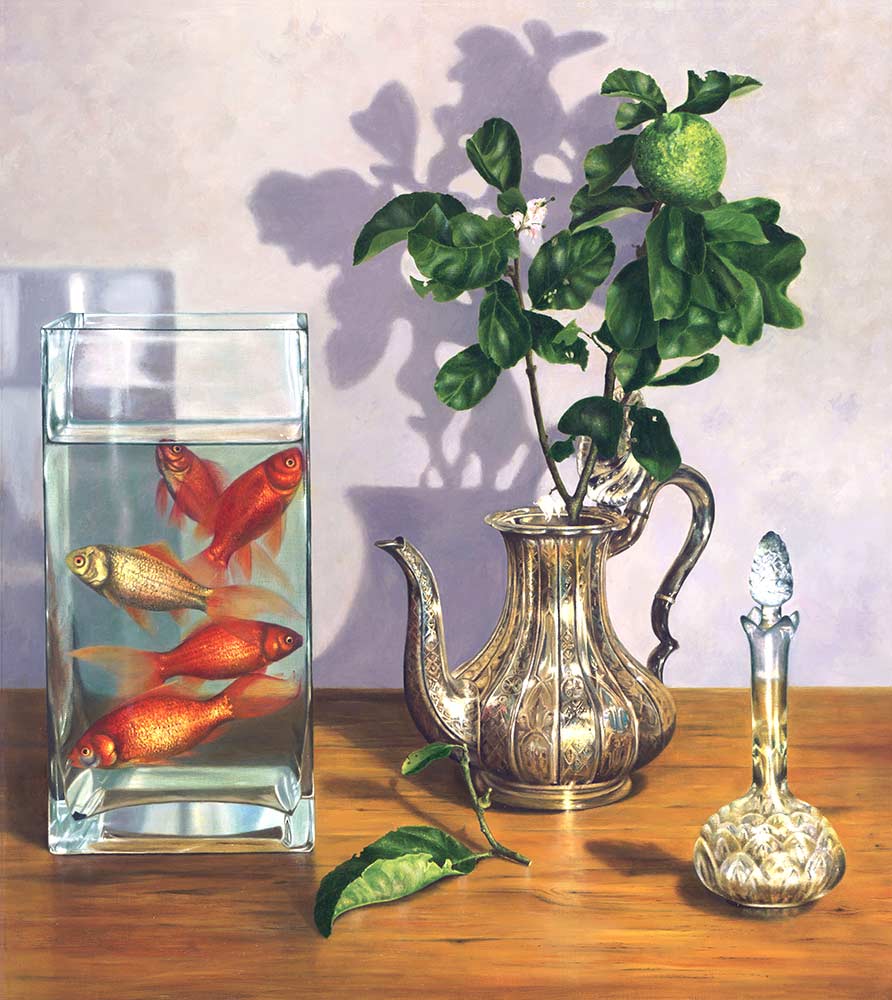
Ida Salamon: The next significant project you are planning is to participate in XIII Florence Biennale 2021. Aside from that, are there any future plans?
Anna Rubin: Oh, so many ideas and plans!
There is a five-year plan to explore the European Art Market, UK, and the US Art market. The body of work will include the new Florentine collection of “Portraits with Still Life,” where I express emotions through people’s faces and hands.
The Objects of Art in the painting are used as symbols for exposing my message to the world.
In Florence, in the world, live many extraordinary people, and I plan to paint them, tell their stories in my new painting style, and get inspired by these stories. This will be fascinating and memorable for all involved and the world to witness the paintings. I am also considering collaborating with Florentine Artisans, whose Art is sadly dying out, like Gabrielle Maselli and his sons, like the cabinet maker Antonio Macchiavelli and stonemason Michelangelo Prudentino, winemakers par excellence Antinori and shoemaker Ferragamo while their Art is alive…
Such a series of artworks would be relevant for the promotion and preservation of precious traditions and hopefully a chance for those to survive the mass production/consumption time we experience now.
Judging by the resonance from my clients, the harmony and beauty of my artwork comforts entertains, and gives joy.
It ennobles and embellishes the space the paintings are presented in. I am pleased to know that my paintings tell a meaningful story, create value to treasure for generations to come, and encourage curiosity for a deeper understanding of culture, history, and aesthetics. In the future, I endeavor to continue having such effect with my evermore evolving Art, new beautiful paintings, and my l’Art de Vivre.
annarubin.com | anna@annarubin.com | Instagram: @annarubinartist

